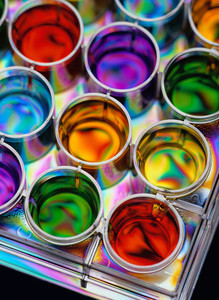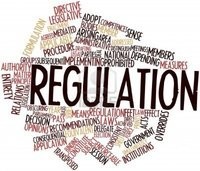Dr Kellie Taylor, Associate Director of the Office of Medication Error Prevention and Risk Management in the Office of Surveillance and Epidemiology at the US Food and Drug Administration’s (FDA) Center for Drug Evaluation and Research (CDER), gave an update on the agency’s naming policies for biologicals/biosimilars at the Drug Information Association’s (DIA) Biosimilars Conference, which was held on 24−25 October 2017 in Bethesda, Maryland, USA [1].
In the US, a legal framework for approving biosimilars was established in 2009, via the Biologics Price Competition and Innovation Act of 2009 (BPCI Act). As part of the FDA’s implementation of the BPCI Act, FDA requested public comment on issues including the role of a product’s non-proprietary name. In August 2015, the agency published draft guidance on naming biologicals [2] and the final version of this guidance was issued in January 2017 [3].
FDA’s objectives with the release of this guidance were to enhance:
Transparency:
- Allows identification of products for safe use and pharmacovigilance
- Facilitates prescribing and dispensing of the intended product
- Patients and providers want to know what the patient received
Trust:
- Practitioners and patients want FDA and others to have the tools available to perform product‐specific pharmacovigilance in all settings of care
Uptake:
- Enhanced prescriber and public confidence facilitates market uptake
The finalized guidance assigns a non-proprietary name for all originator biologicals, related biologicals and biosimilars that includes a ‘FDA-designated suffix’. It outlines the following for naming biologicals:
1. Non-proprietary names, i.e. proper names, for biologicals should include a core name attached by a hyphen to a FDA‐designated suffix that is devoid of meaning.
- For example, for hypothetical products sharing the fictitious core name replicamab, the proper names would include a unique suffix:
-
- Originator biological: replicamab‐cznm
- Related biological: replicamab‐rzbh
- Biosimilar: replicamab‐hixf
2. A unique suffix should be designated for each originator biological, related biological and biosimilar.
- FDA is continuing to consider the format of the suffix for interchangeable biologicals.
3. The naming convention applies to all products, prospectively and retrospectively.
- FDA is continuing to consider the process for implementing this naming convention for previously licensed products.
The following series of two articles discuss in more detail how the agency is going about assigning its naming convention both prospectively and retrospectively to biologicals, including biosimilars.
Related articles
FDA approach to retrospectively naming biologicals
FDA approach to prospectively naming biologicals
References
1. Taylor K. FDA Update on biological product naming. DIA Biosimilars Conference 2017; 24-25 October 2017; Bethesda, Maryland, USA.
2. GaBI Online - Generics and Biosimilars Initiative. FDA issues draft guidance on naming biologicals [www.gabionline.net]. Mol, Belgium: Pro Pharma Communications International; [cited 2018 Mar 23]. Available from: www.gabionline.net/Guidelines/FDA-issues-draft-guidance-on-naming-biologicals
3. GaBI Online - Generics and Biosimilars Initiative. FDA issues final guidance on naming biologicals [www.gabionline.net]. Mol, Belgium: Pro Pharma Communications International; [cited 2018 Mar 23]. Available from: www.gabionline.net/Guidelines/FDA-issues-final-guidance-on-naming-biologicals
Permission granted to reproduce for personal and non-commercial use only. All other reproduction, copy or reprinting of all or part of any ‘Content’ found on this website is strictly prohibited without the prior consent of the publisher. Contact the publisher to obtain permission before redistributing.
Copyright – Unless otherwise stated all contents of this website are © 2018 Pro Pharma Communications International. All Rights Reserved.








 0
0










Post your comment